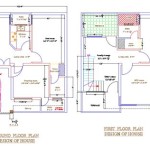Site Plans of Houses: Essential Features to Consider
When planning the construction of a house, the site plan serves as a crucial blueprint that outlines the layout and arrangement of the structure on the property. It provides a comprehensive overview of the house's footprint, orientation, and relationship to the surrounding environment.
Main Components of a Site Plan
A well-crafted site plan typically includes the following essential components:
- Property Boundaries: Delineates the legal boundaries of the land on which the house will be built.
- Building Footprint: Outlines the exact shape and dimensions of the house structure, including any additions or extensions.
- Driveways and Walkways: Indicates the pathways leading to and from the house, including the location of parking spaces.
- Landscaping: Depicts the planned arrangement of plants, trees, and other landscape features on the property.
- Utilities: Shows the location of essential utilities such as water, gas, electricity, and sewer lines.
- Contours and Elevations: Maps the topography of the land, indicating slopes and potential drainage issues.
Benefits of a Detailed Site Plan
A comprehensive site plan offers numerous benefits throughout the construction process:
- Visualization and Planning: Provides a clear visual representation of the house's layout, allowing for informed decision-making and design modifications.
- Code Compliance: Ensures that the house design aligns with local building codes and zoning regulations, preventing costly setbacks.
- Cost Estimation: Helps estimate the project's costs by providing insights into site preparation, landscaping, and utility installation.
- Efficient Construction: Streamlines the construction process by guiding contractors on the precise placement of the house and associated structures.
- Long-Term Maintenance: Acts as a reference for future maintenance and repairs, ensuring that utility lines and other features are easily accessible.
Customizing the Site Plan
Site plans should be tailored to the specific needs of the project and the characteristics of the property. Key considerations include:
- Orientation and Sunlight: Optimizing the house's orientation to maximize natural sunlight and minimize energy consumption.
- Privacy and Views: Designing the layout to ensure privacy from neighboring properties and capture desirable views.
- Existing Features: Preserving valuable existing trees, rock formations, or other natural features on the property.
- Drainage and Water Management: Implementing measures to prevent water buildup and ensure proper drainage.
- Future Expansion: Allowing for potential future additions or modifications to the house or property.
Conclusion
A well-conceived site plan is fundamental to the successful design and construction of a house. By carefully considering the essential components, benefits, and customization options, homeowners and builders can create a detailed blueprint that ensures the house harmonizes with its surroundings and meets their functional and aesthetic needs.

Site Plans What They Are And How To Create One

Site Plans What They Are And How To Create One

Site Plans What They Are And How To Create One

Site Plans What They Are And How To Create One

Site Plans What They Are And How To Create One

Residential Site Plans What To Include And How Draw Them Cedreo

Site Plan Wikipedia

Site Plans

Site Plans What They Are And How To Create One

Residential Site Plans What To Include And How Draw Them Cedreo








